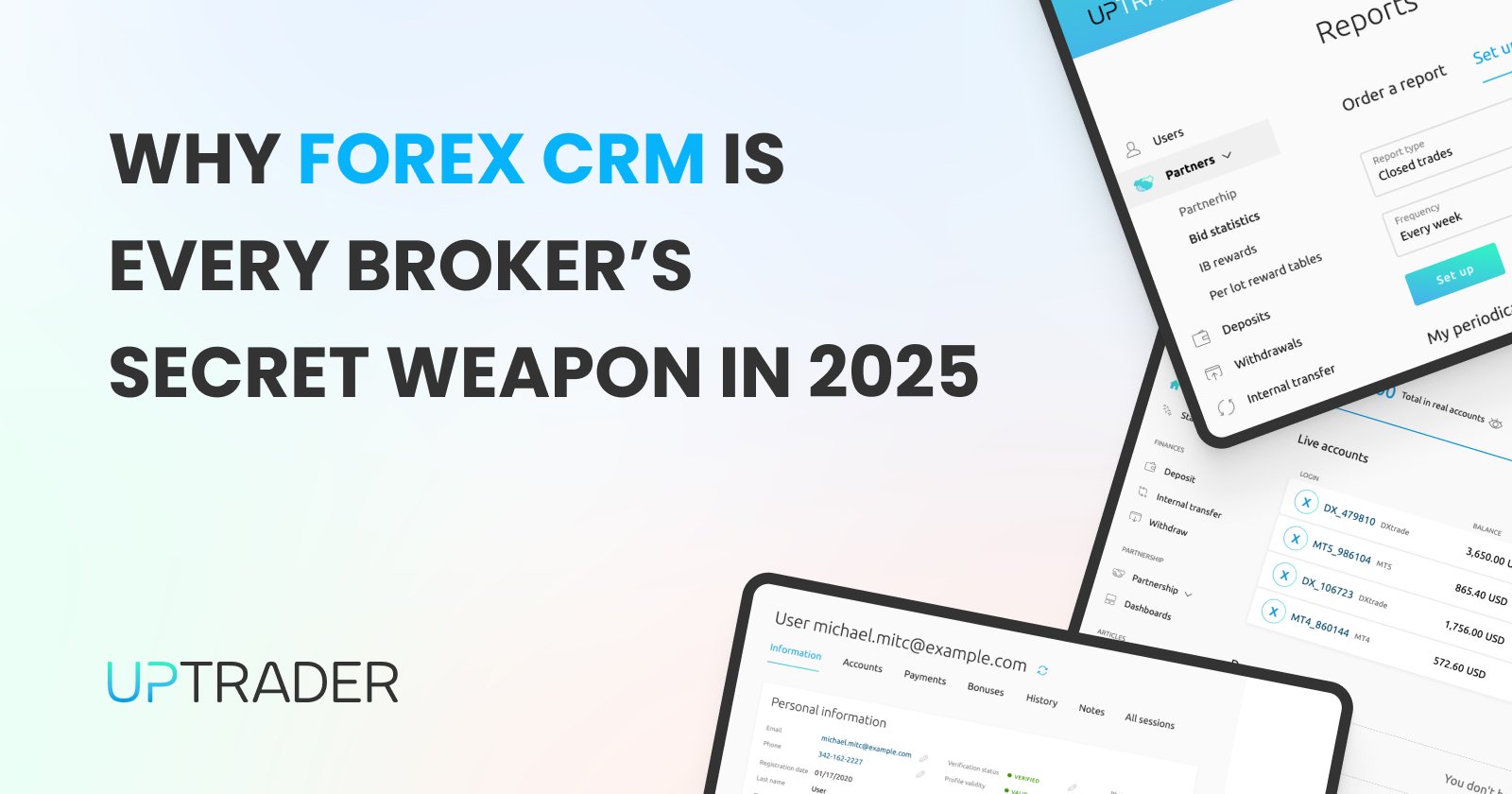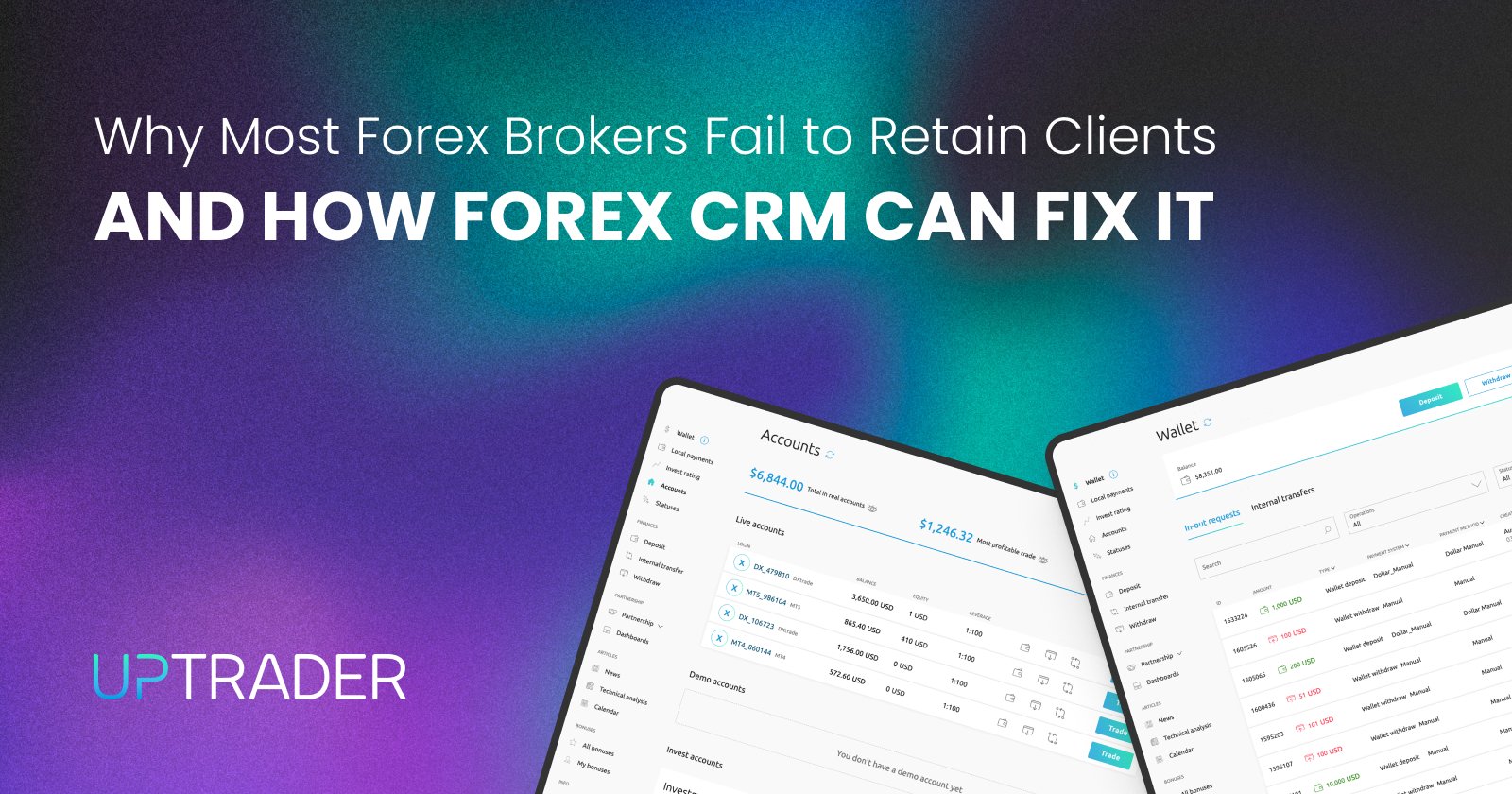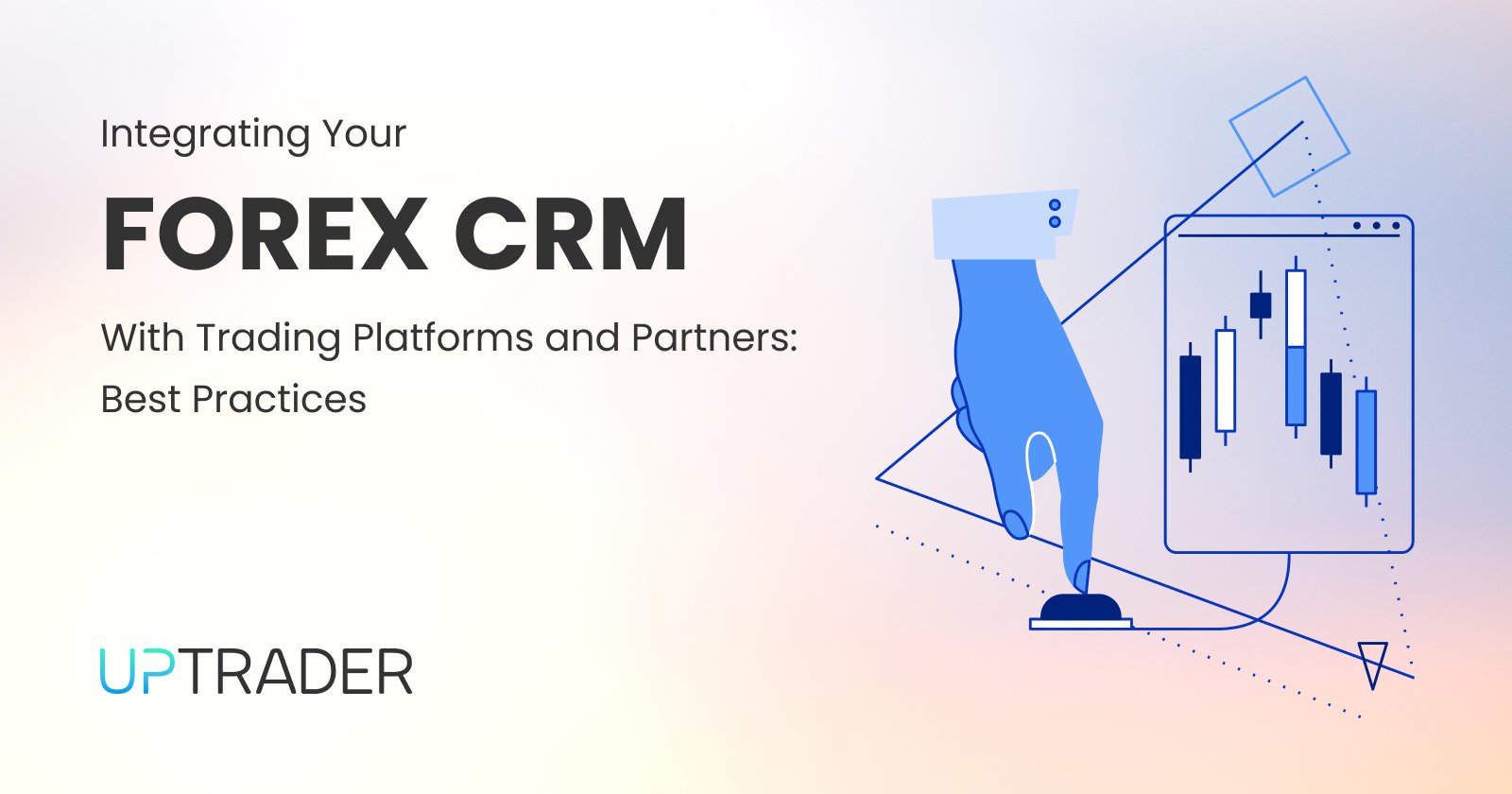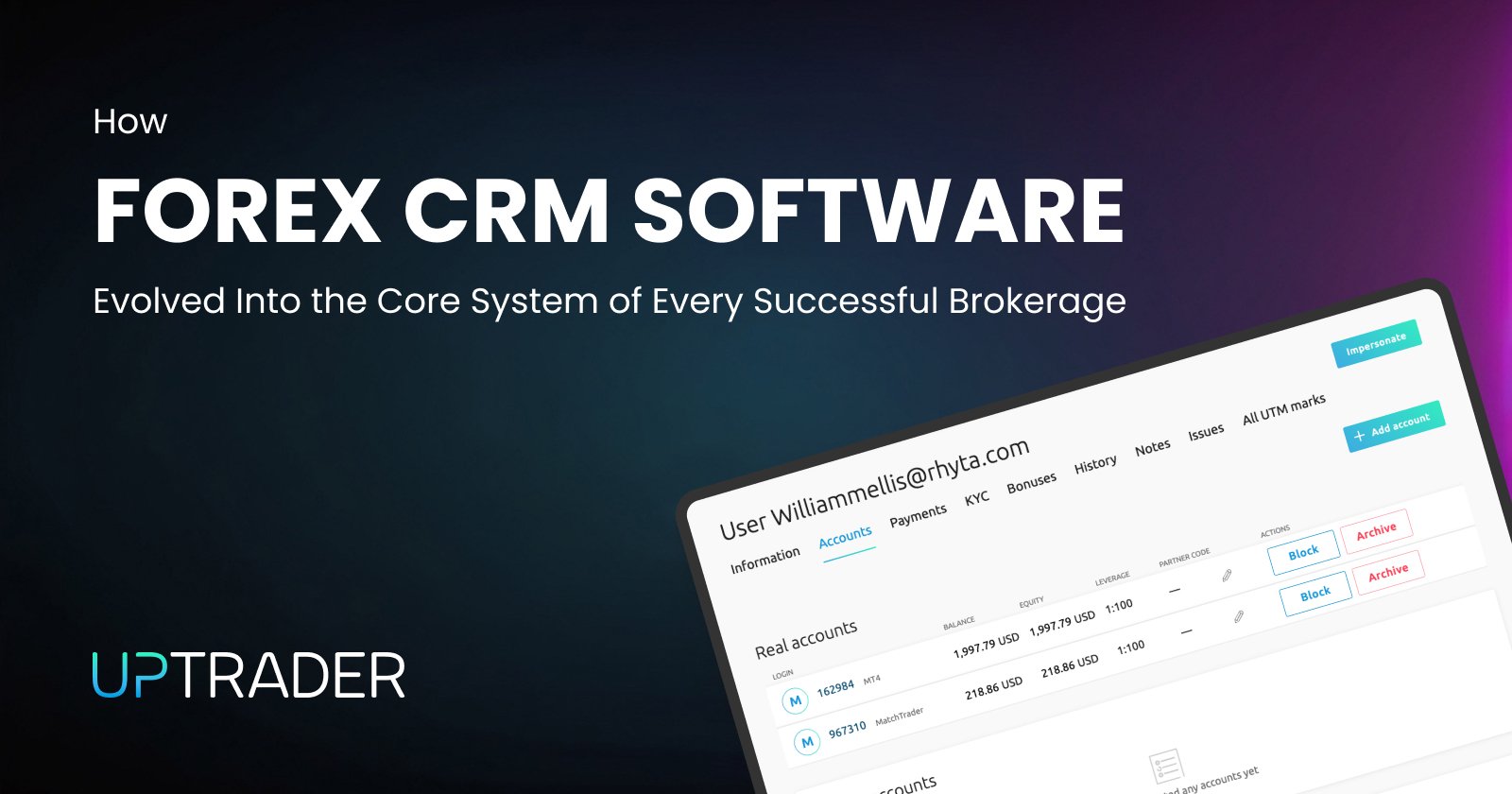Why Forex CRM is Every Broker’s Secret Weapon in 2025

Share this publication:
By mid‑2025, the global foreign‑exchange market processes more than $7 trillion in daily volume. Brokers of all sizes — from boutique shops to multinational operations — are battling fiercely for a slice of that market. Both traders and advertisers have started expecting a more personalized touch to services. In these modern days, Forex-customized CRMs have become a lot more important.
Forex CRMs are a lot more than just address books; they combine support, sales, and marketing into one data-driven engine that uses modern technology to automate almost every process. Here’s why every forward‑looking broker views it as a secret weapon.
Forex CRM Essentials
1. What Is a Forex CRM?
A Customer Relationship Management platform is not new. Sales and support teams have long used CRMs to track leads, log interactions, and manage follow‑up. However, a Forex CRM is purpose-built for brokers. Key differentiators include:
- Trading‑centric Data Models: Contact information now includes trading habits, past deposits and withdrawals, preferred trading instruments, set leverage, and margin utilization.
- Regulatory Workflows: Custom workflows for KYC, AML, and other regulatory compliance frameworks are also prebuilt.
- Affiliate/IB Support: Multi‑tier referral programs, real‑time commission tracking, and partner dashboard portals.
- Integration with Trading Platforms: Automated syncing with MetaTrader 4/5, cTrader, or proprietary servers.
In essence, a Forex CRM understands the broker’s world — so you don’t have to bolt on numerous plugins or cobble together spreadsheets.
2. Why Brokers Can’t Afford to Ignore CRM in 2025
- Retention Provides Sustainable Growth: It has become a lot more difficult to acquire new clients, and click-through rates for forex keywords have increased by 40% since last year. In contrast, fostering an existing client through targeted marketing, tailored proactive servicing, and enhanced servicing can increase LTV profit by over 60%. A robust CRM centralizes all touchpoints — webinars attended, support tickets submitted, margin calls received — allowing teams to anticipate trader needs and deliver timely, relevant outreach (for example, educational content for a client who just increased position size).
- Data‑Driven Resource Allocation: Generic CRMs might tell you how many emails were opened, but a Forex CRM can show you which message nudged a prospect to fund their account. The brokerage market gains understanding on success and its reasoning by tagging targeted ad campaigns to specific funding events. Do budget allocations lean out more to social media and paid partnerships, or do ad referrals work better? What promotions and incentives provide better trade volumes for the instruments?
- Efficient, Audit‑Ready Compliance: Regulatory regimes — whether under Europe’s MiFID II, the UK’s Financial Conduct Authority, or emerging frameworks in Asia — demand meticulous record keeping. Brokers must prove every client’s identity was verified, every suspicious transaction was flagged, and all communications were archived. A modern CRM automates KYC document collection (with reminders when documents expire), applies rule‑based screening against watchlists, and generates detailed audit trails on demand — dramatically reducing manual workload and human error.
- Exceptional, Personalized Support: In surveys, over 70 percent of traders cite support responsiveness as a key loyalty driver. Yet many brokers still rely on siloed help‑desk tools, causing delays and frustration. A Forex CRM integrates live‑chat transcripts, email threads, and phone logs alongside trading records. When a trader inquires about a failed withdrawal, the agent instantly sees their deposit history, open positions, and any recent margin calls — resolving issues swiftly and accurately.
3. Key Features That Give Forex CRMs Their Edge
- Automated, Risk‑Aware Onboarding: Prospective clients loose interest or turn to the competition because of long waiting times. Through a Forex CRM, automated systems help guide clients through the ID verification, risk profile, and account funding processes. Enhanced due-diligence will be automated based on risk assigned to the profile.
- Advanced Affiliate & Introducing‑Broker (IB) Tracking: Affiliate programs remain a top acquisition channel because they align incentives. Forex CRMs support nested commission structures (e.g., a master agent earning overrides on sub‑IBs), real‑time crediting of referred account activity, and flexible payment schedules. Partners log into a self‑service portal, view their earnings, download tax documents, and submit payout requests — without broker intervention.
- Integrated Marketing Automation: Gone are generic email blasts. Today’s brokers send hyper‑targeted sequences: educational videos for novice traders, concise market overviews for seasoned pros, and event‑driven alerts when volatility spikes. The CRM ties these campaigns to account attributes (e.g., trading frequency, preferred instruments), automatically adjusting message content and cadence.
- Comprehensive, Drill‑Down Analytics: Brokers need both the big picture and granular insights. Executive dashboards display KPIs like net new deposits, churn rates, and average revenue per user (ARPU). Meanwhile, operational teams can slice data by geography, instrument class, or acquisition channel — pinpointing inefficiencies or untapped growth opportunities.
- Seamless Technology Ecosystem: A Forex CRM isn’t an island. Best‑in‑class solutions offer open APIs and prebuilt connectors to trading servers (MT4/5, cTrader), payment gateways (cards, e‑wallets, local bank transfers), webinar platforms, and even social media ad managers. Data flows effortlessly in both directions, erasing manual processes and minimizing synchronization errors.
4. Practical Steps to Implement a Forex CRM
- Conduct a Thorough Needs Assessment: Hold a stakeholder meeting with representatives from sales, marketing, compliance, and IT. Analyze current processes: the lead entry funnel, KYC processes, and the escalation of support tickets.
- Choose a Vendor with Deep Forex Expertise: Often, Generic CRMs lack industry-specific modules, which leads to expensive customizations. Providers with industry regulatory knowledge, prebuilt integrations with popular trading servers, and templates for affiliate management should be prioritized.
- Plan and Execute Data Migration: Data Migration. Legacy datasets, spreadsheets, trading platform logs, or third-party KYC software might be stored in siloed systems. Remove duplicate records, normalize patterns, and cleanse invalid entries prior to importing to ensure clean datasets. Accurate reporting relies on clean datasets and smooth user experiences.
- Drive Adoption Through Training & Champions: Users will reject any system, regardless of its sophistication, that does not have their buy-in. Develop short, easy-to-follow reference guides, hold hands-on workshops for every department, and designate “CRM champions” in every team to address issues and provide suggestions. Compliance should encourage the sales team to document every engagement, the compliance team to utilize automated compliance triggers, and the support team to make real-time case status updates as they update cases.
- Iterate and Optimize Continuously: A CRM deployment project has to be treated as ongoing work. Counters need to be set for quarterly reviews to analyze trends on the set KPIs, receive feedback from users, and assess other areas of automation. Small changes, such as changing tag lines in onboarding emails or changing the criteria for reward referrals, can lead to significant gains.
5. Looking Ahead: The Next Frontier in Forex CRM
- AI‑Driven Predictive Engagement: Through predictive engagement, clients can be provided with tailored bonuses, which boost cross-sell and retention. AI will almost immediately be available to predict trader behaviours; who is most likely to make a deposit, who is likely to churn, and who can be given VIP invites.
- Sentiment Analysis on Client Voice: Detecting trends of sentiment is possible by analyzing discussions, emails sent to support, and feedback to surveys through Natural Language Processing (NLP). Personalized communications can be initiated to address concerns before clients turn to alternatives. Clients wanting to leave can be sought out by providing catered services.
- Hyper‑Personalized Content Delivery: Beyond inserting a client’s name, future CRMs will deliver dynamic content blocks: interactive dashboards showing real‑time performance for each trader’s favorite currency pair, or learning modules that adapt based on quiz results.
- Mobile‑First, Agent‑Empowerment Apps: As more brokers adopt remote or hybrid support models, mobile CRM applications will allow sales and support agents to access client profiles, approve payouts, or escalate compliance issues from their smartphones — ensuring service continuity anywhere, anytime.
Conclusion
In 2025’s crowded Forex marketplace, differentiation hinges on operational excellence and client experience. A specialized CRM platform delivers both — connecting data silos, automating complex workflows, and empowering teams with actionable insights. Brokers that embrace this technology gain an outsized advantage: faster onboarding, stronger trader relationships, bullet‑proof compliance, and measurable ROI. If your organization is still juggling disparate tools and manual processes, now is the moment to make CRM your strategic hub. That secret weapon could be the difference between leading the pack and trailing behind.
If these features and words convince you to try implementing a CRM in your brokerage, you can schedule a sophisticated demo for our CRM solution by speaking with a consultant on our website. We not only offer CRM solutions but also other amazing features with our software.







